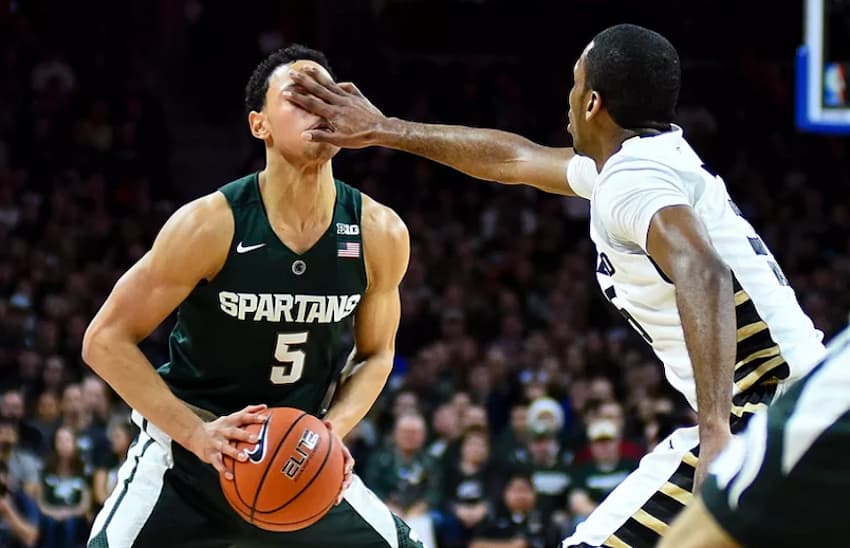How Many Fouls Can You Get In Basketball? The NBA is the only league in the world that plays 48 minutes per game and allows more fouls per game than any other league.
In the NBA, how many fouls do you get? The NBA allows a player six personal fouls before being fouled out and being unable to rejoin the game, at which point the player must leave the court to sit on the bench. Personal fouls can also be flagrant, unsportsmanlike, or technical.
So, How Many Fouls Can You Get In Basketball? Because not all fouls are the same, an explanation of the various fouls will be examined, as will the strategy for revealing players in foul trouble.
How Many Fouls Can You Get In Basketball: Personal Fouls vs. Team Fouls

Personal fouls as well as team fouls are not interchangeable; there are some distinctions between the two. What is the difference between a team foul and just a personal foul?
Personal foul
Personal fouls are given to players one at a time, with a maximum of six allowed. A foul is defined as any illegal contact with an opposing player that violates NBA rules. Each personal foul received will be got to add to the team foul total.
Team foul
Personal fouls are considered team fouls; every player on the court who receives a personal foul contributes to the team foul. Coaches who obtain technical fouls add to their team’s foul total.
When a team accumulates 5 fouls in a quarter, the opposing team will shoot free throws. The team’s fouls are reset each quarter, but the player’s personal fouls are not.
How Many Fouls Can You Get In Basketball: Technical fouls, Unsportsmanlike Fouls, and Flagrant fouls

Not that all fouls are created equal, and while an NBA game allows for six fouls, the severity of the foul is important. To be too severe can cost you your game and get you kicked out.
Technical foul
If you obtain one technical foul, it counts as one of your personal fouls and one of your team fouls. Receiving two technical fouls in a single game automatically disqualifies you from the game, requires you to leave the court, and you are not permitted to spectate.
A player’s technical foul is typically the result of a player fouling one other player and disagreeing with the ref’s call. The foul is one personal foul; however, if the player receives a technical foul from the ref due to his rage, this will count as the 2nd personal foul.
This is two personal fouls introduced to the total; if you had four personal fouls first before the above example occurred, you would just be fouled out of the game.
If you had three fouls and the above scenario occurred, you would be in foul trouble with five fouls, and, depending on the quarter of the game and how angry your coach is, you would really be subbed off the court.
Unsportsmanlike foul
Unsportsmanlike fouls are fouls committed by a player on the player rather than the ball. As an example, the ballhandler who’s really setting up the offense may have the ball stolen from him by the player guarding him. The player can now run down the court in front of the ball, attempting to score.
The player who had the ball stolen from them grabs the player and does not try to retrieve the ball. This is referred to as an unsportsmanlike foul.
When foul results in two of these types of calls, the opposing team shoots double the free throws whilst the player is out of the game.
Flagrant foul
How Many Fouls Can You Get In Basketball, especially in Flaganrant fouls? There are two types of flagrant fouls: flagrant one and flagrant two. Consider flagrant one to be a hard foul, and flagrant two to be a purposeful hard foul. This is the simplest way I can explain it without going into too much detail about each.
During the game, the referee reviews all fouls on the video to determine the degree of flagrantness. A player who gets a flagrant 1 is allowed to continue playing.
A player who gets a flagrant 2 must leave the game and they may face a suspension that includes a monetary fine and potentially a suspension that includes missed games. It makes no difference how many fouls you have prior to committing a flagrant 2 foul.
Hard fouls to the head and groin are examples of these fouls. Fouls are committed while the player is in the air attempting a basket, resulting in a push that throws the player off balance and puts him in danger of landing safely.
How many shots do you take for each foul?
This is determined by whether the player is on defense as well as offense, the type of foul committed by the player, and the number of teams fouls a team may have.
Technical foul
A technical foul leads to two free throws and possession of the ball for the opposing team.
Defensive foul
If a player is on defense but also fouls an offensive player who is attempting a shot, the shooter will be awarded two free throws if the shot falls within the three-point line. If the foul occurs outside of the three-point line, the player receives three free throws.
If a player is fouled during a shot attempt and manages to make the shot, he is granted one free throw. Extra points are awarded for field goals made from a two-pointer or a three-pointer.
Offensive Fouls do not require you to shoot free throws, even in bonus circumstances. If an offensive player commits a technical, flagrant, or unsportsmanlike foul, they will be awarded free throws depending on the severity of the foul.
Unsportsmanlike
A flagrant foul results in two free throws and the possession of the ball by the opposing team.
Flagrant foul
A flagrant foul results in two free throws and the possession of the ball by the opposing team.
Last thought
This about ” How Many Fouls Can You Get In Basketball” concludes the article; if you enjoyed these suggestions, please browse the blog and read my article down below.

